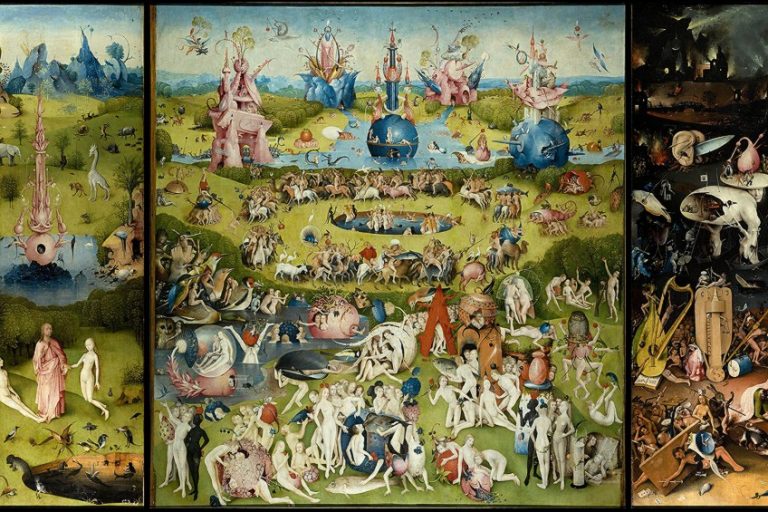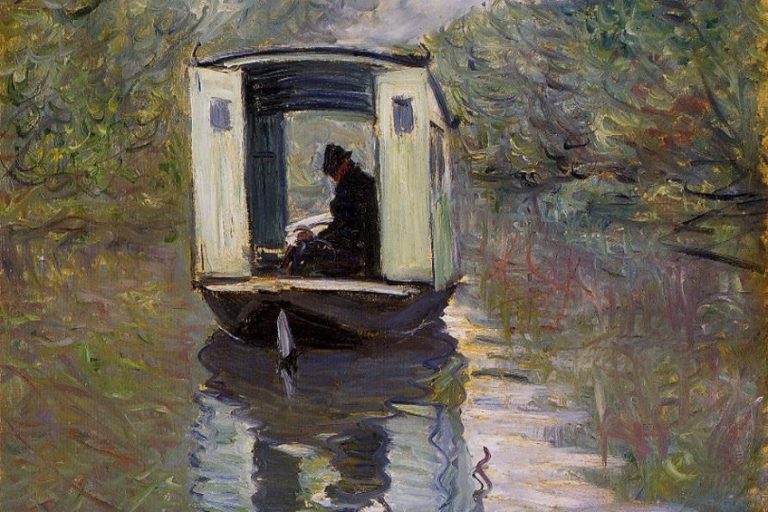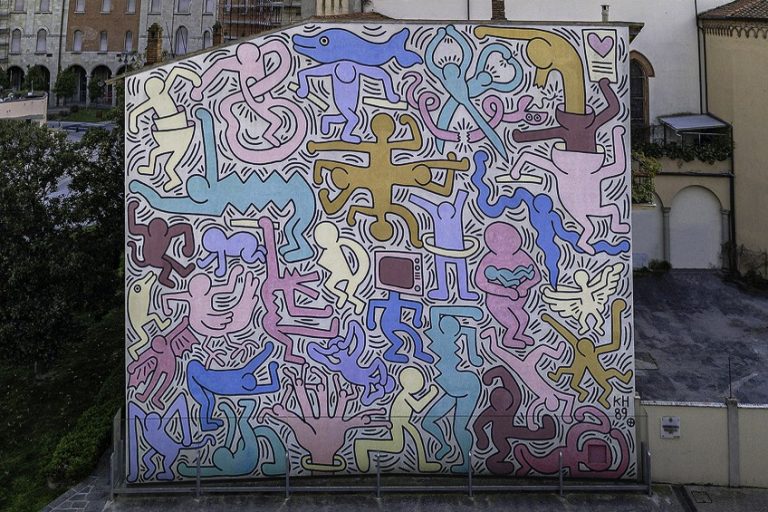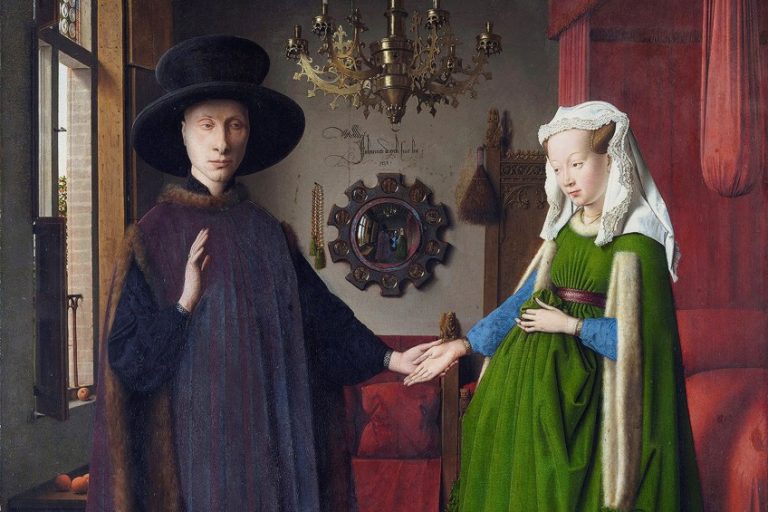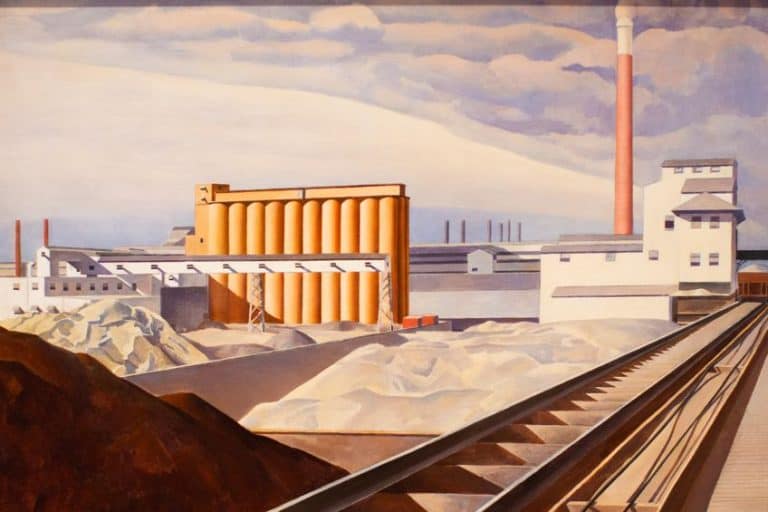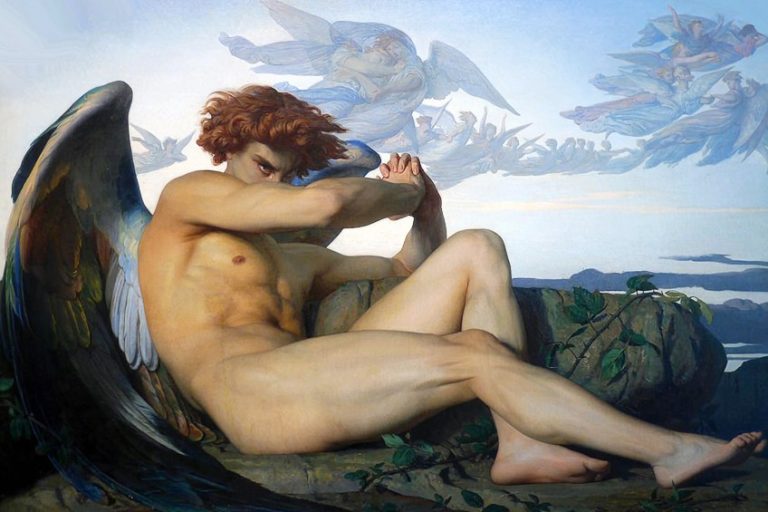Ancient Egyptian Paintings – Explore Ancient Egyptian Artwork
Egypt is regarded as one of the oldest civilizations on earth, and ancient Egyptian artworks are some of the finest art specimens we have from that period of our history. Famous Egyptian artists of the time produced work such as Egyptian tomb paintings, as well as Egyptian paintings of the afterlife, dance, war, and many other topics. These Egyptian murals are able to provide modern scholars with a glimpse into the lives of these fascinating and ancient people. Here are some of the most renowned types of ancient Egyptian paintings.
Notable Types of Ancient Egyptian Paintings
Ancient Egyptian paintings served a number of uses, such as religious and burial duties. They were employed to ornament the caskets and walls of the deceased’s tombs, as well as to decorate temples and other sacred areas. The characteristic style of ancient Egyptian artworks emphasizes a flat, two-dimensional aspect with strong lines and vivid colors. People and objects were generally drawn in a frontal, static position, with the most significant figures represented larger in size than others. Symbolic imagery is abundant in Egyptian murals, which frequently portray deities, scenes from mythological legends, and daily life.
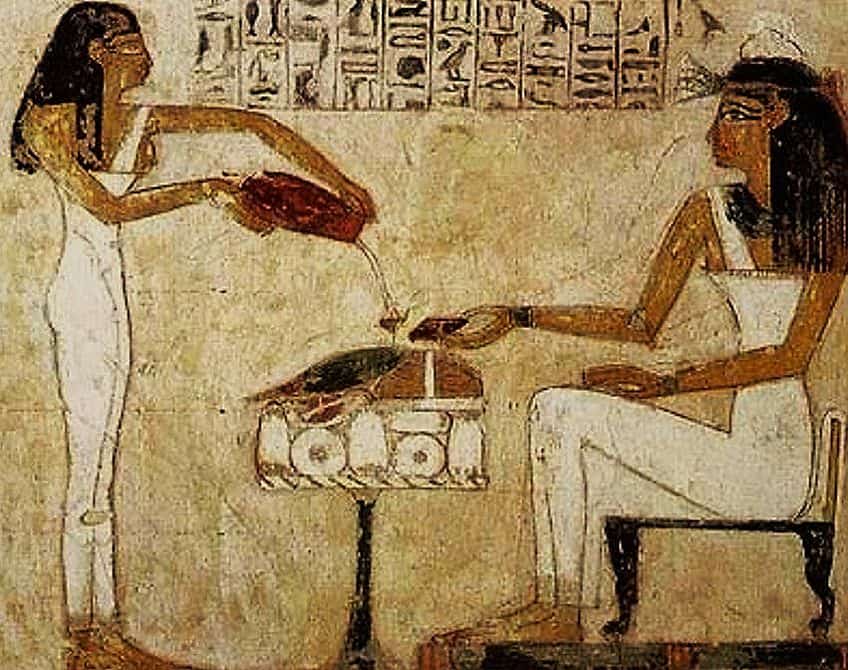
Each symbol had a distinct meaning and was used to express important information about the afterlife and one’s role in it. Natural colors like malachite and lapis lazuli were used in the production of ancient Egyptian artworks. These pigments were combined with a binding agent such as gum Arabic or egg and applied to a variety of surfaces such as wood, stone, and papyrus. Many famous Egyptian artworks have survived because of Egypt’s dry atmosphere, which helped to safeguard them from degradation. Furthermore, numerous Egyptian paintings were painted in tombs and other underground areas, which protected them from the weather. Here are some of the most prominent types of ancient Egyptian paintings.
Egyptian Paintings About Dance
Dancing was very significant in ancient Egyptian society. Dancing and music were commonplace. The Egyptians’ lives were instilled with a rhythmic dance, with individuals frequently performing labor to the sound of percussive instruments. Ancient Egypt also witnessed the beginnings of street dancers who delighted people passing. Egyptian dance is grouped into several genres based on the performers and the event. In ancient Egypt, there were many various styles of dance, such as religious dances presented in temples, royal dances conducted for the pharaoh as well as other high-ranking figures, and the performance of folk dances at social gatherings.
Several of these diverse styles of dance are seen in Egyptian art, with dancers typically wearing different types of clothes or jewelry to represent their social rank.
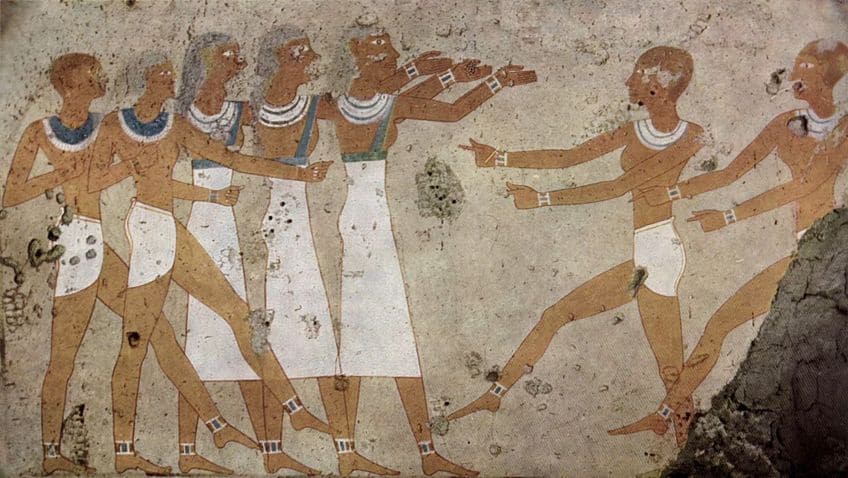
Famous Egyptian artists represented dance using a number of approaches, such as employing bright, vivid colors to accentuate motion and the inclusion of many figures to give a feeling of rhythm and dynamism. In ancient Egyptian culture, dancing was generally utilized as a symbol of fertility and renewal, and artworks representing dance were typically intended to express these concepts. Furthermore, many Egyptian paintings depicting dancing were intended to reflect the balance and harmony of the natural world.
Cartouches
Cartouches were oval forms that were typically applied to surround and accentuate the name of a king or other significant people in ancient Egyptian artwork and hieroglyphs. Cartouches were also thought to offer defensive properties. Encircling a person’s name in a cartouche was believed to safeguard them from evil spirits and other negative influences. Cartouches were often used in funeral situations, such as on tombs and sarcophagi.
It was thought that by placing the deceased’s name in a cartouche, they would be recognized and acknowledged by the deities in the afterlife.
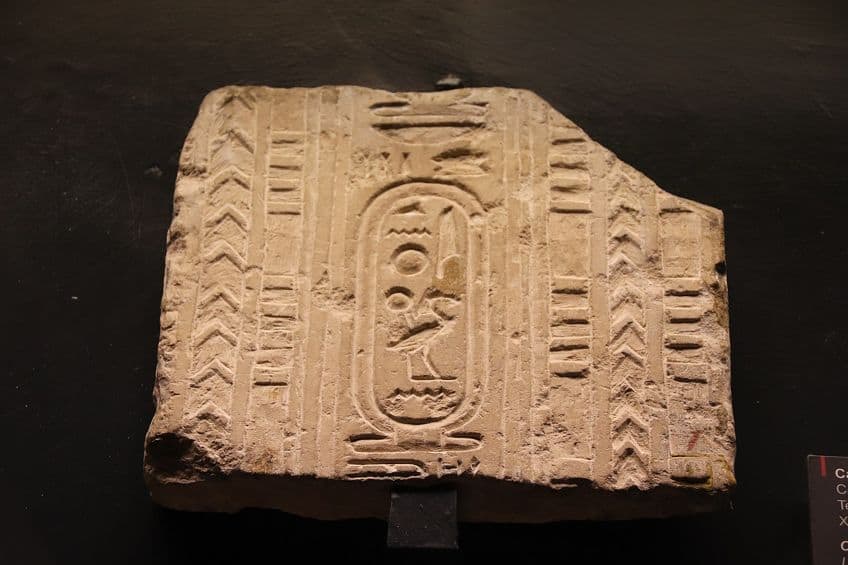
Tutankhamun’s cartouche is one of the most renowned examples of an ancient Egyptian cartouche. It was discovered on a variety of tomb artifacts, including his coffin, funerary mask, and other pieces of jewelry. The vulture and cobra motifs, which were historically believed to symbolize the deities Wadjet and Nekhbet, are prominent on Tutankhamun’s cartouche. These symbols were used in pharaoh cartouches to signify their authority and power. Sekhmet, the powerful lioness warrior, is seen destroying several ethnic opponents while the vulture deity Nekhbet glides protectively overhead in two paintings.
War Paintings
Several Egyptian war paintings show combat scenes, military expeditions, and conquests. Murals such as these were commonly seen on the sides of temple complexes, in addition to tombs and other funeral structures. Egyptian battle paintings’ content varied based on the historical period and place in which they were painted. Some paintings showed specific conflicts or military operations, while others portrayed more broad battlefield themes. They commonly portrayed pharaohs or military commanders leading their armies into war, as well as hand-to-hand fighting and men with weaponry like arrows and bows, spears, and chariots.
The Siege of Dapur is one of the most well-known ancient Egyptian paintings about war.
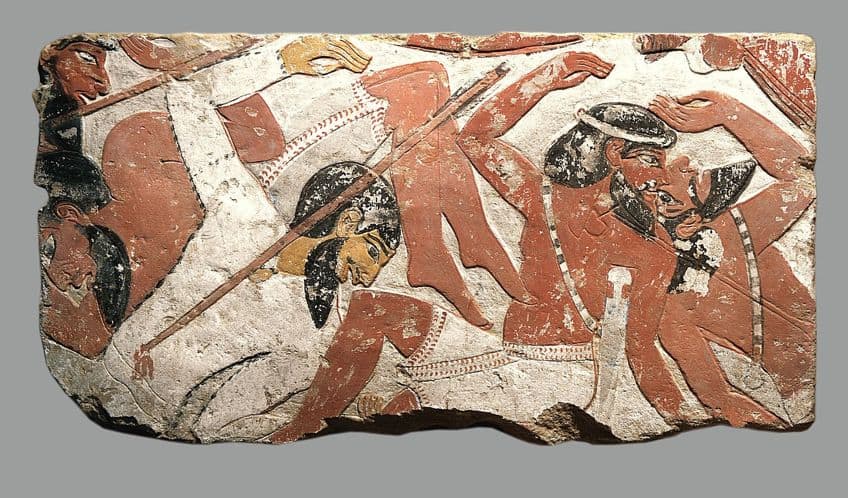
The artwork depicts the siege of Dapur, which occurred in 1269 BCE. Pharaoh Ramesses II is portrayed as bigger than the others to emphasize his immortality. The artworks also show Ramesses’ sons taking part in the Siege. This famous ancient Egyptian artwork, discovered in one of the pharaoh’s tombs, depicts the Egyptian king’s attack against Muwatalli’s resurgent Hittite army, with the whole conflict taking place in modern-day Syria. Ramesses’ men were outnumbered and ambushed while defending against a fierce and much superior foe, yet the pharaoh pushed the fight to a stalemate and then went back home.
Egyptian Deities Paintings
Egyptian deities were regularly portrayed in paintings and other types of art in ancient Egypt. These deities were thought to have authority over many areas of life, and their representations were employed in a variety of ways to respect and honor them. These deities are commonly housed in shrines, along with their cults and ceremonies. This lends them significant historical importance, making them among the most famous Egyptian artworks. Religions proliferate throughout the civilization, each with its own deities, rites, and beliefs, and each has a devoted following.
It is thought that different communities have distinct deities that represent them, and adherents revere their particular gods.

Egyptian deities were frequently represented in human or animal forms in Egyptian paintings. The deity Horus, for instance, was commonly represented as a falcon, whereas the deity Bastet was portrayed as a cat. These representations were employed to portray the power of the deity and to relate them to various aspects of the natural world. Paintings depicting the deity Osiris were regularly found in burial contexts to aid in the deceased’s safe trip to the afterlife. Moreover, deity paintings were extensively employed in temple complexes to communicate myths and legends about the deities and to inform people about their beliefs.
Funerary Paintings
The objective of Egyptian funeral paintings was to provide a handbook for the deceased’s passage to the afterlife. These artworks were often produced on the inside of tombs and represented a range of scenes and imagery thought to be required for the departed to negotiate the complicated and hazardous voyage to the afterlife. The “Opening of the Mouth” ritual was one of the most significant types of funeral artwork. The image portrayed the ritual being conducted on the deceased’s mummies, which was thought to be vital for the departed to be capable of eating and breathing in the afterlife.
Other popular subjects in Egyptian funerary paintings were images of the departed being guided through the underworld by the deity Anubis, as well as representations of the departed coming before the deities to be evaluated for their actions in life.
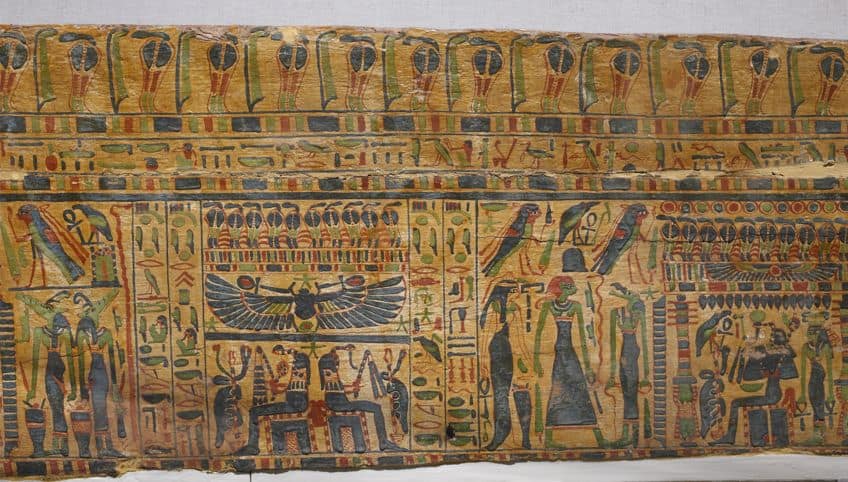
These scenarios typically featured a multitude of deities, each of whom was thought to have a distinct role in the afterlife and to be able to provide protection and advice to the departed. Egyptian burial paintings were also created to commemorate the departed and their life achievements. These usually included images of the departed participating in things they enjoyed, such as hunting or performing music, as well as images of the departed with their loved ones and relatives.
The Afterlife Paintings
The ancient Egyptians’ faith was centered on a deep belief in the afterlife. Death is considered a transitory suspension of life rather than a total end of existence. They are confident that everlasting life may be attained by devotion and mummification. It was believed that a person’s afterlife would be decided by the Egyptian deities. The pharaohs were firm believers in the concept of an afterlife, and as a result, they regularly planned their funerals, making certain that everything was in order for them to resurrect one day.
The ancient Egyptians had several interpretations and thoughts concerning religious afterlife beliefs.
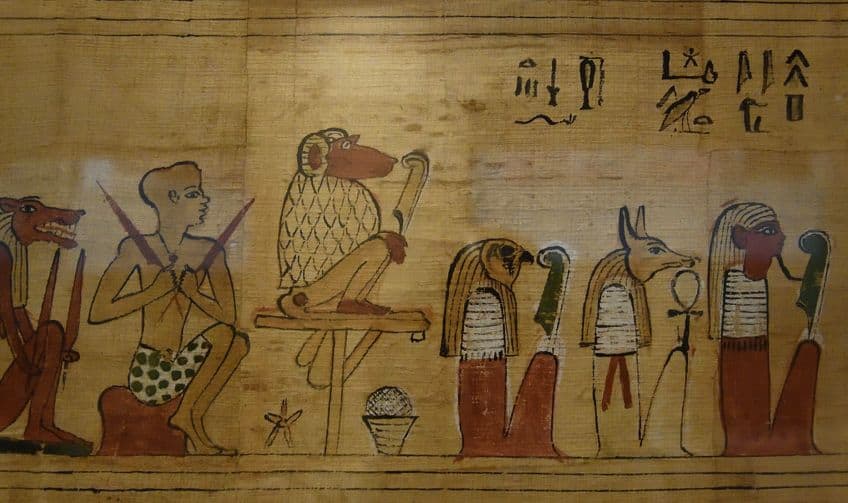
Living among the deities, the stars, and the sun could be a potential version of the afterlife. This concept was notably popular among rulers, but it gradually spread to other people. An individual may exist among the stars and socialize with the moon in this version of the afterlife. Scenes of the deceased being taken through the underworld were other popular themes in afterlife paintings, as representations of the departed’s heart are measured against the feather of Ma’at. This was a critical point in the corpse’s voyage to the afterlife since the heart had to be discovered to be lighter than a feather in order for the person to obtain eternal life.
The Book of the Dead Paintings
The Book of the Dead is an ancient manuscript containing texts on how to restore the dead back to life. It contains various magical spells that are supposed to assist a deceased person’s trip through the underworld after death and resurrection to the afterlife. The first incantations and writings date back to 3000 BCE, with more spells incorporated later in the history of Egypt, the last being added sometime between the 11th and 7th centuries BCE. The text was usually written on papyrus scrolls and buried with the departed.
It is not a single book, instead being a collection of works published over the course of several centuries.
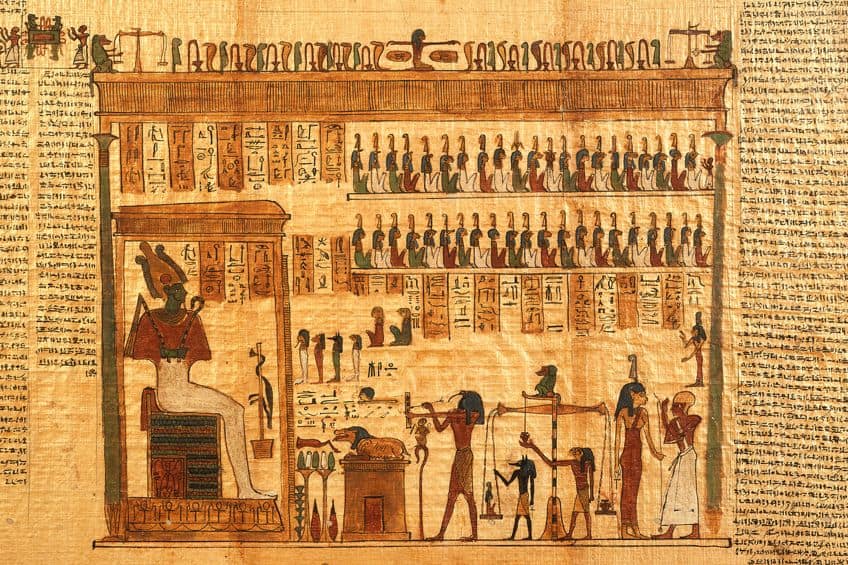
The rituals and prayers included in the literature were designed to assist the departed in traversing the complicated voyage through the afterlife, and they covered a diverse range of subjects, from protection from bad spirits to directions for obtaining food and drink. Several of the prayers on these scrolls were complemented by artwork or miniatures depicting afterlife scenarios. Images of the deities of the afterlife, as well as representations of the departed being judged by these gods, were incorporated into these scenes. Other significant spells were the “Negative Confessions”, in which the departed asserted their innocence of specific transgressions.
Mummification Paintings
Mummification paintings were another popular theme in ancient Egyptian art, and they represented the intricate process of preserving the corpse for the afterlife. These Egyptian paintings, which were mainly discovered in tombs and other funeral structures, portrayed a diverse range of situations and imagery linked to the mummification process. The dressing of the body in linen was a recurring topic in these artworks. The ritual of mummification started with the removal of the person’s internal organs, which were put in canopic jars. The body was then washed and dried before being shrouded in linen bandages.
The mummification priests were typically depicted in the paintings gently dressing the body in linen, with the person’s limbs clearly visible.
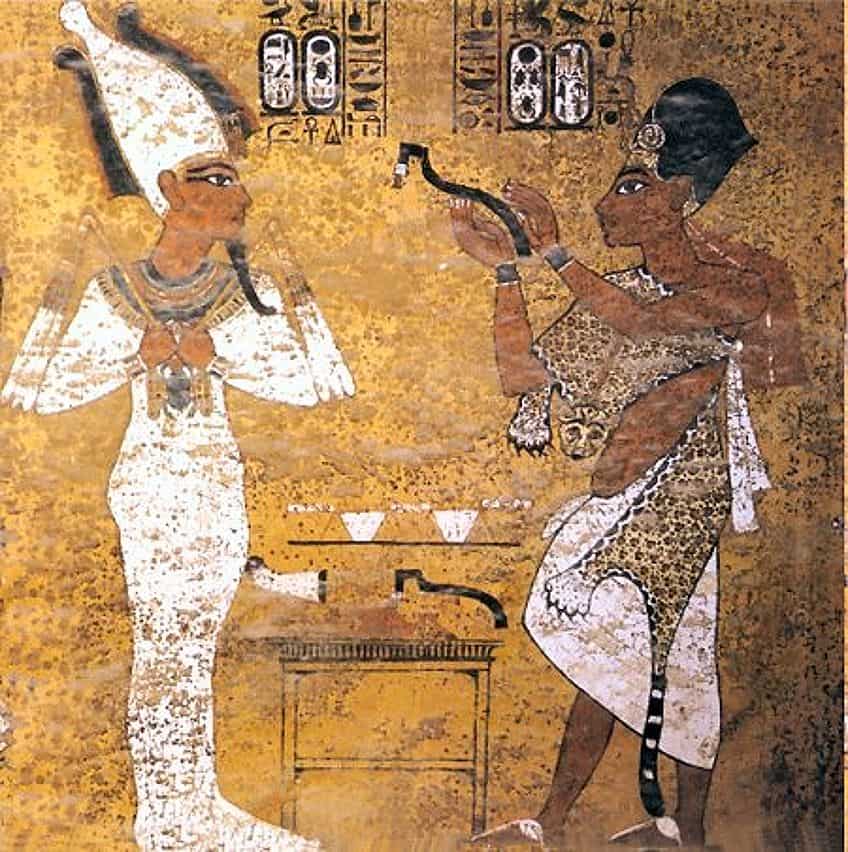
Images of priests rubbing the body with resins and oils, as well as depictions of the dead being put in a sarcophagus, were other prevalent subjects in mummification paintings. Hooks, knives, and spatulas were commonly shown in the paintings as devices and instruments utilized during the mummification process. Mummification paintings incorporated depictions of the deities connected with the process. Anubis, the deity of embalming, was a prominent figure in these works, and he was usually portrayed with the head of a jackal, supervising the mummification process.
Tomb Paintings
Egyptian tomb paintings were discovered in the tombs of Pharaohs and their nobility. These ancient Egyptian artworks were meant to serve funerary functions, portraying scenes from the afterlife and promising protection to the departed. Often, the Egyptian murals featured events from Egyptian mythology, such as the voyage of the sun god Ra, and images from the deceased’s daily life, such as farming or hunting, or scenes of leisure. These images were usually surrounded by hieroglyphic inscriptions that offered information on the artwork’s subject matter, as well as rituals and prayers aimed at helping the departed in the afterlife.
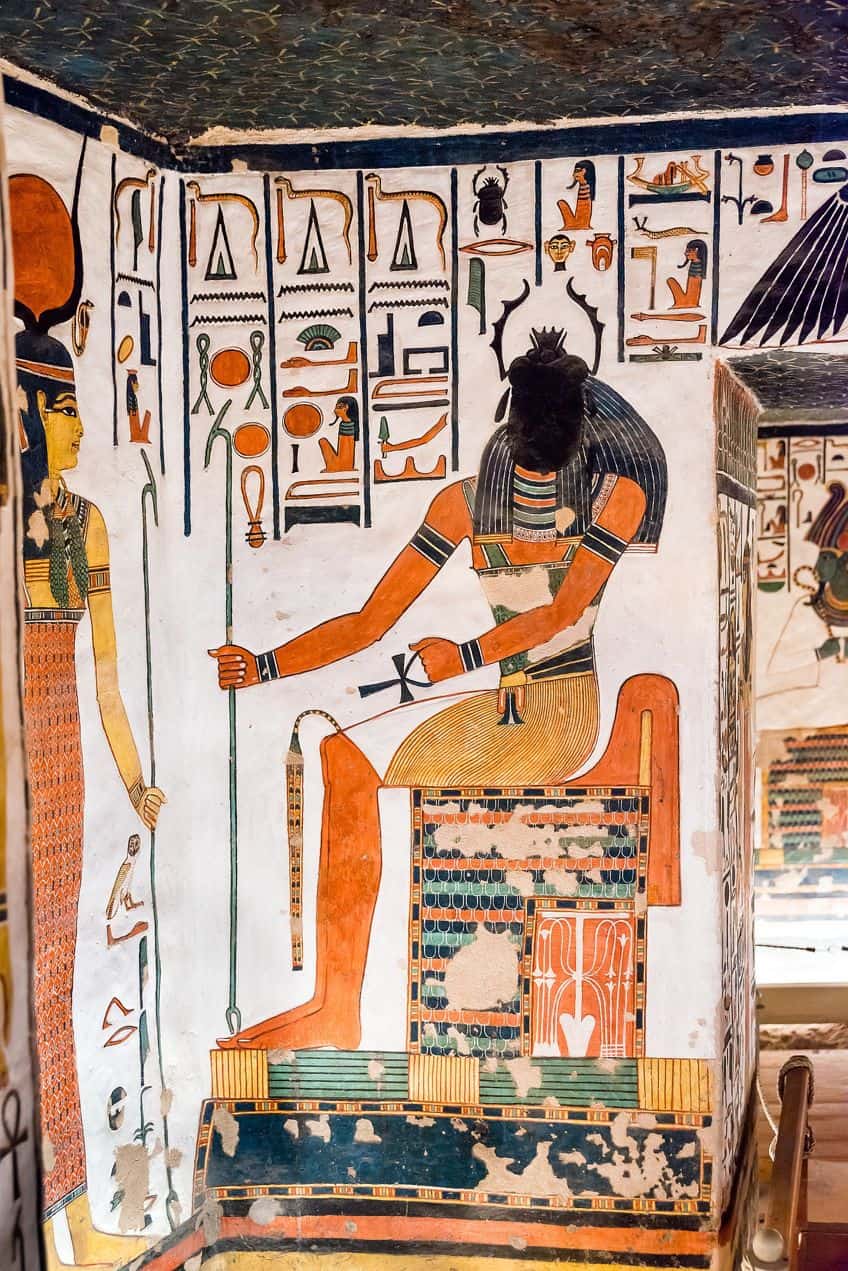
Egyptian tomb paintings were usually produced using a combination of methods like tempera, fresco, and encaustic painting. These approaches enabled a diverse range of colors and textures, from subtle shading to bright, brilliant hues. Feminine beauty is a prominent aspect of these Egyptian tomb paintings. Female mourners are also shown with exquisite beauty in ancient Egyptian artwork. These murals were created on the walls of the wealthy’s tombs to provide a pleasant afterlife for the dying. The person’s side is painted in a range of colors such as green, red, black, and yellow.
That concludes our look at famous Egyptian art styles. These Egyptian murals were an integral part of the lives of the people of ancient Egypt. They not only portrayed the happenings of the time, but also the significant burial traditions and portrayals of what they anticipated in the afterlife. Thankfully they were produced in areas where they were not subject to the harsh elements of Egyptian weather, and have managed to survive to the present day for us to admire and try to understand.
Take a look at our Egyptian paintings webstory here!
Frequently Asked Questions
What Is an Example of a Famous Egyptian Artwork About War?
The Battle of Kadesh Egyptian mural, which portrays a conflict between the troops of Egyptian pharaoh Ramesses II and King Muwatalli II, the Hittite, is a well-known instance of an Egyptian military mural. The Egyptian mural depicts both armies in action, with horses, chariots, and soldiers engaged in conflict, and is placed on the wall of the Hypostyle Hall of Karnak’s temple. This famous Egyptian artwork is renowned for its representation of military tactics and weaponry in great detail, in addition to its use of color and size to give a feeling of dimension and movement. The Siege of Dapur painting, discovered in the tomb of Egyptian commander Horemheb, is another notable instance of an Egyptian military mural. The mural shows events of a siege, with Egyptian forces scaling the walls of Dapur and engaging in hand-to-hand battles with the besieged.
Were There Any Famous Egyptian Artists in the Ancient Era?
While we are aware of many ancient Egyptian paintings and have recognized styles and patterns that point to distinct workshops or schools of painters, we do not have documentation of specific artists from that period. In truth, anonymous artisans who served the royal court, temples, or rich people produced ancient Egyptian art. Yet, some of the most well-known pieces of ancient Egyptian art were constructed during Pharaoh Akhenaten’s reign in the 18th dynasty. Akhenaten is remembered for his religious reforms, which included a shift away from ancient polytheistic worship. This shift in emphasis is reflected in period art, which is defined by a more natural and stylized approach to representing the human body.
Isabella studied at the University of Cape Town in South Africa and graduated with a Bachelor of Arts majoring in English Literature & Language and Psychology. Throughout her undergraduate years, she took Art History as an additional subject and absolutely loved it. Building on from her art history knowledge that began in high school, art has always been a particular area of fascination for her. From learning about artworks previously unknown to her, or sharpening her existing understanding of specific works, the ability to continue learning within this interesting sphere excites her greatly.
Her focal points of interest in art history encompass profiling specific artists and art movements, as it is these areas where she is able to really dig deep into the rich narrative of the art world. Additionally, she particularly enjoys exploring the different artistic styles of the 20th century, as well as the important impact that female artists have had on the development of art history.
Learn more about Isabella Meyer and the Art in Context Team.
Cite this Article
Isabella, Meyer, “Ancient Egyptian Paintings – Explore Ancient Egyptian Artwork.” Art in Context. May 2, 2023. URL: https://artincontext.org/ancient-egyptian-paintings/
Meyer, I. (2023, 2 May). Ancient Egyptian Paintings – Explore Ancient Egyptian Artwork. Art in Context. https://artincontext.org/ancient-egyptian-paintings/
Meyer, Isabella. “Ancient Egyptian Paintings – Explore Ancient Egyptian Artwork.” Art in Context, May 2, 2023. https://artincontext.org/ancient-egyptian-paintings/.



